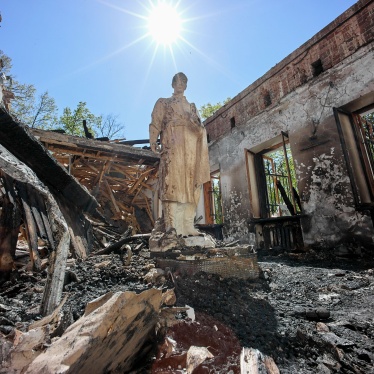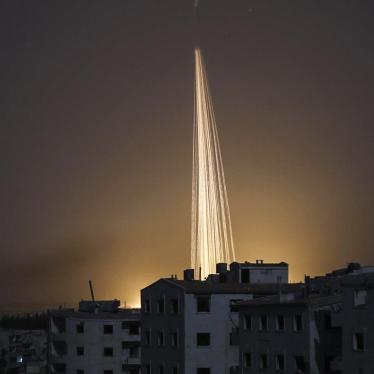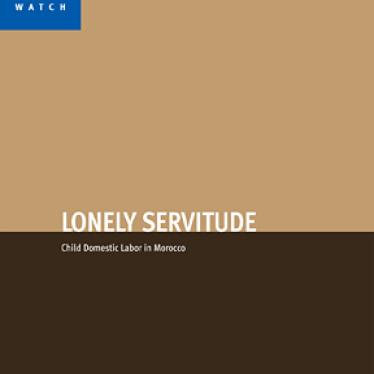Human Rights Watch welcomed the adoption today of new international law aimed at minimizing the risks of explosive remnants of war, while expressing dismay at the weakness of the instrument. Human Rights Watch also criticized negotiators for failing to deal directly with the pressing dangers caused by cluster munitions.
After one year of negotiations, States Parties to the 1980 Convention on Conventional Weapons (CCW) agreed to a new Protocol V on explosive remnants of war (ERW). The protocol makes a state responsible for clearance of all ERW in territory under its control; it is also to provide warnings, risk education and other measures to protect the civilian population. The user of weapons that become ERW is to provide assistance for clearance of that ERW in territory not under its control. In essence, the new protocol extends the post-conflict requirements set forth in 1996 Amended Protocol II on landmines to all explosive remnants of war.
“The new protocol should be useful in reinforcing the necessity and urgency of cleaning up the detritus of war,” said Steve Goose, director of the Arms division of Human Rights Watch. “It is a step forward, but it falls far short of what is needed.”
The protocol is replete with qualifiers and ambiguities, to the extent that its key provisions could be considered voluntary in nature. Instead of clear cut obligations, states are to undertake actions “where feasible,” “as soon as feasible,” “where appropriate,” “to the maximum extent possible, “as far as practicable,” when “in a position to do so,” and so forth. Moreover, most provisions apply only to ERW created in future wars, not to the huge existing ERW problem.
“Because the text is so weak, the success of the protocol will depend on good will and good intentions, and on aggressive and thorough implementation by governments,” said Goose.
Explosive remnants of war include all types of explosive ordnance (such as bombs, rockets, mortars, grenades, and ammunition) that have been used in an armed conflict but failed to explode as intended, thereby posing ongoing dangers. ERW also includes abandoned explosive ordnance that has been left behind or dumped by a party to an armed conflict.
Explosive remnants of war are currently found in at least ninety-two countries, resulting in thousands of civilian casualties every year. ERW not only pose lasting dangers to lives and limbs, they also constitute long-term impediments to economic development.
Despite the urging of Human Rights Watch and many other non-governmental organizations (NGOs), negotiators chose not to address specifically the issue of cluster munitions. “As the recent conflicts in Yugoslavia, Afghanistan, and Iraq have shown, cluster munitions pose unacceptable dangers to civilian populations,” said Goose. “This is clearly the weapon category most in need of international regulation. But governments decided to avoid the tough issue.”
Human Rights Watch and others called on CCW States Parties to agree to a mandate for negotiations on cluster munitions in 2004. While some supported such negotiations, including Austria, Canada, Ireland, New Zealand, Norway, Sweden, and Switzerland, others blocked the proposal, including China, Pakistan, Russia, and the United States. With reluctant acquiescence from the latter, States Parties agreed to continue discussions next year on “preventive measures,” including those related to cluster munitions.
On November 13, 2003, eighty-five NGOs (including Human Rights Watch) from nearly fifty countries launched the Cluster Munition Coalition. The coalition calls for no use of cluster munitions until their humanitarian problems have been resolved.
States Parties also agreed to continue work on the issue of antivehicle mines next year, based primarily on a proposal put forward by the United States.
The ERW negotiations were led by Ambassador Chris Sanders of the Netherlands. Each State Party must now formally ratify the ERW protocol according to its domestic procedures. A total of twenty ratifications are required before the new protocol becomes legally binding international law.






